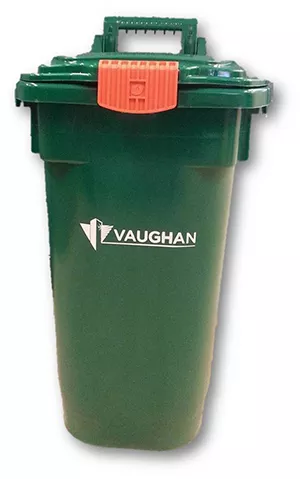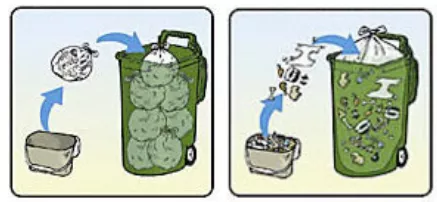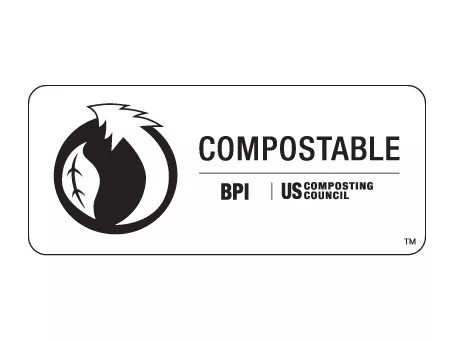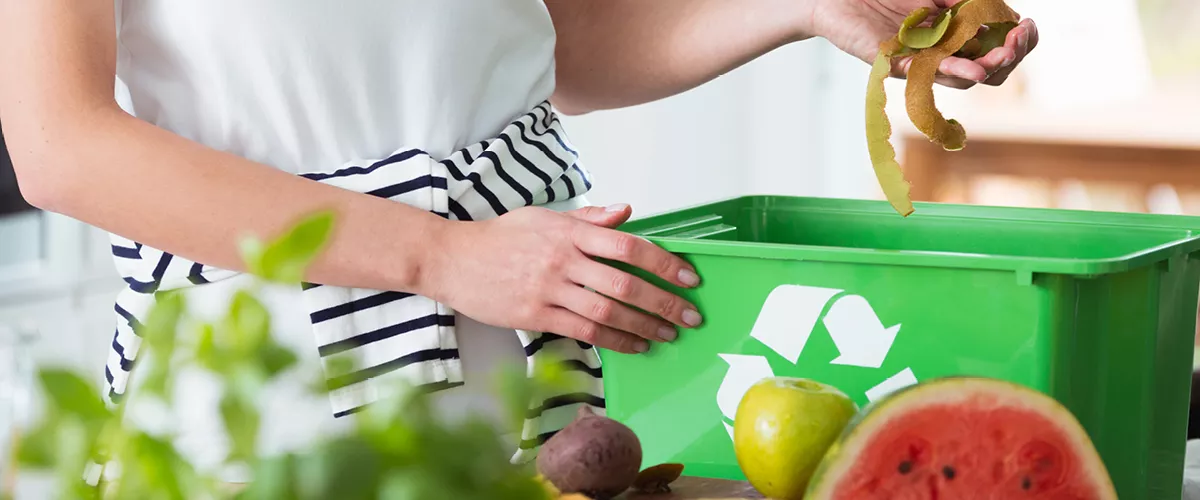Green Bin Organics
Did you know that tissues, paper towels, napkins, and soiled paper plates and pizza boxes can go in the green bin?
Residents can also purchase a backyard composter to decrease the amount of organic waste placed at the curb. These actions help make a difference in the City’s Green Directions Vaughan Community Sustainability and Environmental Master Plan and York Region’s Waste Management Master Plan called the SM4RT Living Plan.
Collection
Green bin waste is collected once a week on the scheduled collection day. Green bins should be placed at the curb no earlier than 6 p.m. the night before and no later than 7 a.m. on the day of collection. The time of collection could change without notice.
Place collectible waste materials at the curb for collection (on or beside the driveway). Do not place collectible materials on the road. Keep waste materials separate from your neighbours. Ensure waste is properly set out in the winter months. Organic waste bagged and tied securely, and placed inside the green bin.
Acceptable Bins
- A green bin provided by the City of Vaughan

- A green bin obtained at retail outlets – ensure bins are identical to City bins
- A large number of diapers can be placed in a clear bag used solely for diapers and placed on top of the green bin for collection
- The total weight of one full container and its contents must not exceed 20.5 kilograms (45 pounds)
- Option 1 – Line the kitchen container with a compostable, white or clear plastic bag. Fill the lined kitchen container with organics. When full, tie the organic filled bag and transfer it into the unlined green bin. Place the securely latched green bin at the curb on your collection day.
- Option 2 – Line the green bin with a large compostable bag. Fill the unlined kitchen container with organics. Transfer loose organic materials from the kitchen container into the lined green bin. Tie the green bin liner closed. Place the securely latched green bin at the curb on your collection day.

Unacceptable bins
- regular garbage containers or bags
- cardboard boxes or other like containers
What goes in the green bin?

All food and food scraps
- Fruit and vegetable cores and peels
- Meat and seafood bones
- Egg shells
- Tea bags and coffee grounds
- Fats, oils, and grease (absorbed into paper towels, not flushed down the toilet)
Food-soiled paper and napkins
- Tissues, paper towels and napkins
- Soiled paper plates and pizza boxes
- Small amounts of shredded paper
Other items
- Diapers and feminine hygiene products
- Hair and fur
- Pet waste and kitty litter
- Household plants and flowers
Use of compostable bags is preferred but clear or white plastic bags are accepted. Certified compostable bags will display a 'compostable' logo on the packaging. Paper bags are also compostable, but these do not require the compostable logo.

Some companies market their bags “biodegradable” for use in green bins, but this is not always the case. Biodegradable bags break down into smaller pieces of plastic, and don’t decompose. For this reason, compostable bags are preferred.
Due to the nature of some of the materials collected in the green bin (pet waste, diapers, sanitary products, etc.), the City requires all organics to be bagged.
Backyard composting
Backyard composting is the process of adding organic materials such as food waste to a composter to produce a soil conditioner that will improve soil and the plants growing in it. Backyard composting reduces waste set out curbside.

